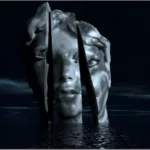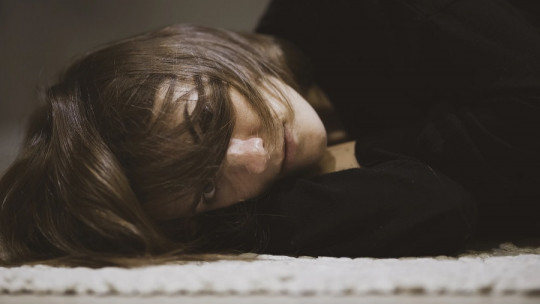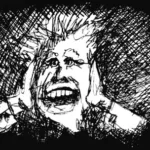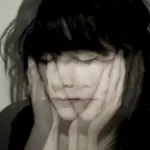
Psychotic disorders are mental problems that alter how we perceive reality. Schizophrenia and other disorders of this type can manifest delusions, very common symptoms in psychotic conditions.
Reference delusions are a type of psychotic manifestation, although they can occur in other disorders beyond the schizophrenia spectrum. Patients who suffer from it believe that what happens in the world is with them, that what others say and do is related to them.
In this article we are going to delve deeper into reference delirium, what its characteristics are, possible causes and treatment.
What are delusions of reference?
Nobody perceives reality as it is. We all have belief systems that make us interpret the world through a filter that distorts it. Our belief systems prevent us from being completely objective., making us victims of multiple distortions and cognitive biases that explain why two people are able to see different things from the same stimulus. This is not pathological, but part of the human condition.
However, there are some limits. Despite interpreting the world through a personal lens that changes everything, it is normal that it does not stray too far from reality itself. The opposite case is having a delusional perception of things. When we talk about delusions we are referring to a series of beliefs that alter perception in a pathological way. Because they are not based in reality, delusions are not shared within the patient’s culture and social group.which makes it stand out, and not for the better.
In reference or self-referential delusion, the focus is the patient himself. The person who manifests this distortion of reality believes that external situations, such as the behavior of others, are related to him. He may think that people are sending him hidden messages through body language, that people whisper in his presence. There are cases of people who think that billboards, television advertisements or newspaper news are made to send them a message.
Generally Delusions are a symptom of mental disorders belonging to the schizophrenia spectrum., although they can also occur in other disorders with or without psychotic symptoms. In the case of reference delusion, this can worsen and become a whole disorder in itself, delusional disorder.
Manifestations of reference delusion
The delirium of reference shares the following manifestations with the rest of the delusions:
Although delusions are considered pathological, they can occur as an isolated symptom. That is, they do not necessarily have to be accompanied by a full-blown mental disorder, which means there may be an absence of other psychotic symptoms or deterioration in the psychosocial activity of the individual. However, if it worsens, it could lead to a serious disorder such as schizophrenia or other psychotics.
In the specific case of the delusion of reference, the manifestation that would differentiate it from the rest is, as we have commented, the delusional idea that everything that happens in the subject’s life has to do with him. That is to say, the delusional theme of this problem is the erroneous personal attribution to the person himself, that everything that happens is with him or her.

Like other types of delusions, If it is not detected early and treated early, its course is chronic.. It begins with the suspicion that everything that happens around them has to do with him or her and, with the passage of time, a delusion develops with ideas such as that they are trying to communicate with the patient through television. , the radio or even supermarket products.
The delirium of reference has low prevalence. The data suggests that it would be found between 0.03 and 1% of the population, being more common in women than in men. As with other delusions, and this being a useful feature in the differential diagnosis with other disorders of the psychotic spectrum, its appearance is late. It usually appears after the age of 40.
Causes of this delirium
There is no known clear cause that explains the appearance of reference delusions. As with the rest of delusions and, also, mental disorders in general, it is assumed that It must be the result of the interaction between hereditary aspects and environment in equal parts.
However, the fact that the exact cause is not known does not mean that there are no known risk factors for manifesting this delirium. Among such factors it is considered that they would be drug and psychoactive substance use, history of delusional episodes, and family history of mental disordersespecially if they are psychotic disorders or contain psychotic symptoms, such as the following:
@image(id)
- You may be interested: “The 16 most common mental disorders”
An investigation into this psychological phenomenon
A study that draws attention regarding this delusion is the one carried out by the group of Mahesh Menon and colleagues in 2011. Their research concluded that the structures of the cortical midline, subcortical regions, the amygdala and the body striatum are involved in the appearance of self-reference delusion. In their work, it was found that people who present such delirium show greater activation in these brain areas.
Furthermore, these same authors found that patients with baseline delirium did not show a differential activation pattern when they received information about themselves and contrary information. That is, her brain had problems differentiating the information that was directed at these patients from that which was not. This has served as a neurological explanation for the tendency of patients with this delusion to interpret the behaviors of others or everyday situations as something that suits them.
- Related article: “Parts of the human brain (and functions)”
Treatment
When the baseline delusion is a symptom of another disorder or caused by a medical illness, The treatment is aimed at intervening on the pathology that caused it.. That is, if, for example, the patient presents delusions associated with schizophrenia, the main treatment will be focused on treating that disorder.
The main therapeutic route is pharmacological, specifically using antipsychotics. Added to it, psychological therapy is also used, with cognitive-behavioral treatments being those that have been shown to be most effective for the therapeutic approach to delusions and other psychotic symptoms.
In the specific case of reference delusion, tools such as cognitive restructuring and confrontation are used, with the aim of increasing the patient’s rational judgment towards himself and also trying to dismantle the beliefs that have based his particular delusional idea. .








